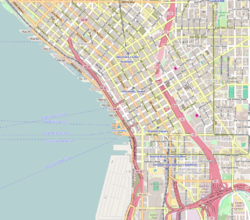A funeral home, funeral parlor or mortuary, is a business that provides burial and funeral services for the dead and their families. These services may include a prepared wake and funeral, and the provision of a chapel for the funeral.

The Michigan Union is a student union at the University of Michigan. It is located at the intersection of South State Street and South University Avenue in Ann Arbor, Michigan. The building was built in 1917 and is one of several unions at the University of Michigan.
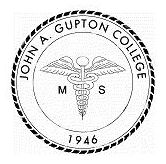
John A. Gupton College is a private 2-year college in Nashville, Tennessee that specializes in mortuary science. Founded in 1946, it awards the Associate of Arts degree in Funeral Service. Gupton College is accredited by both the Commission on Colleges of the Southern Association of Colleges and Schools and the American Board of Funeral Service Education. Gupton is located just west of downtown Nashville, in the same building as the Tennessee Funeral Directors Associational Office.
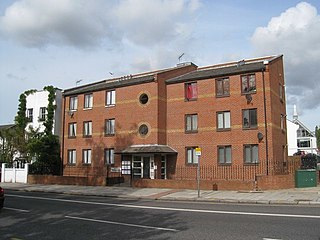
Multifamily residential is a classification of housing where multiple separate housing units for residential inhabitants are contained within one building or several buildings within one complex. Units can be next to each other, or stacked on top of each other. A common form is an apartment building. Many intentional communities incorporate multifamily residences, such as in cohousing projects. Sometimes units in a multifamily residential building are condominiums, where typically the units are owned individually rather than leased from a single apartment building owner.

The Pioneer Building is a Richardsonian Romanesque stone, red brick, terra cotta, and cast iron building located on the northeast corner of First Avenue and James Street, in Seattle's Pioneer Square District. Completed in 1892, the Pioneer Building was designed by architect Elmer Fisher, who designed several of the historic district's new buildings following the Great Seattle Fire of 1889.

YMCA Boston was founded in 1851 in Boston, Massachusetts, as the first American chapter of YMCA.

Pike Place Market is a public market in Seattle, Washington, United States. It opened on August 17, 1907, and is one of the oldest continuously operated public farmers' markets in the United States. Overlooking the Elliott Bay waterfront on Puget Sound, it serves as a place of business for many small farmers, craftspeople and merchants. It is named for its central street, Pike Place, which runs northwest from Pike Street to Virginia Street on the western edge of Downtown Seattle. Pike Place Market is Seattle's most popular tourist destination and the 33rd most visited tourist attraction in the world, with more than 10 million annual visitors.

The James B. Duke House is a mansion at 1 East 78th Street, on the northeast corner of Fifth Avenue, on the Upper East Side of Manhattan in New York City. The building was designed by Horace Trumbauer, who drew heavily upon the design of Château Labottière in Bordeaux. Constructed between 1909 and 1912 as a private residence for businessman James Buchanan Duke and his family, the building has housed the New York University (NYU)'s Institute of Fine Arts since 1959.

The Alaska Trade Building, also known as the Union Record Building and the Steele Building, is a historic building in Seattle, Washington located on First Avenue near the Pike Place Market. Built in 1909, it was one of the first reinforced steel, concrete and brick buildings in the area and was advertised as being completely fireproof. The building is historically associated with the country's only Union-owned daily newspaper, The Seattle Union Record and is listed on the National Register of Historic Places. The Butterworth Building, another National Register property, neighbors it to the north.
Edgar Ray Butterworth was an American funeral director, believed to have coined the professional terms mortuary and mortician.
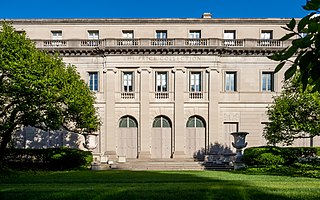
The Henry Clay Frick House was the residence of the industrialist and art patron Henry Clay Frick in New York City. The mansion is located between 70th and 71st Street and Fifth Avenue on the Upper East Side of Manhattan. It was constructed in 1912–1914 by Thomas Hastings of Carrère and Hastings. It was transformed into a museum in the mid-1930s and houses the Frick Collection and the Frick Art Reference Library. The house and library were designated a National Historic Landmark in 2008 for their significance in the arts and architecture as a major repository of a Gilded Age art collection.

The E. Barrett Prettyman Federal Courthouse is a historic building in Washington, D.C. It was built in 1949–50 and currently houses the United States District Court for the District of Columbia, the United States Court of Appeals for the District of Columbia Circuit, and the United States Foreign Intelligence Surveillance Court.
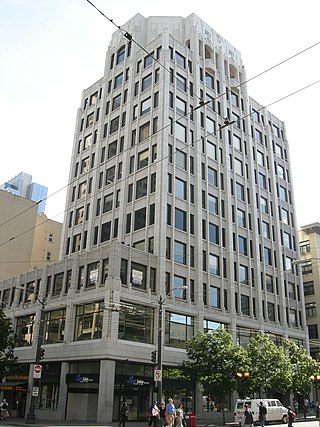
The Olympic Tower, originally known as the United Shopping Tower, then the Northwestern Mutual Insurance Building, and later, the Olympic Savings Tower, is a historic 12-story office tower located in Seattle, Washington and listed on the National Register of Historic Places. It was originally built in 1929 at the Southwest corner of Third Avenue and Pine Street for the United Pacific Corporation under the control of Seattle investment firm Drumheller, Ehrlichman and White. It was designed by Henry Bittman who would also design additions to the building in 1939.

The Bank of California Building is a landmark building located at 815 2nd Avenue in Seattle, Washington. It is located mid-block adjoining the Exchange Building. It was built by the Bank of California in 1924 and has been continually used as a bank ever since. It housed the offices for the Bank of California until 1973 when a new building, the Union Bank of California Center was built at the corner of 4th and Madison Streets. Ironically, this newer, larger building is no longer used as a bank and instead is occupied by a Bartell Drugs store. The original Bank of California Building was retained as a branch office until being sold to the Puget Sound Mutual Savings Bank in 1982 which was headquartered in the building until 1993 when through a series of mergers and acquisitions the bank became a branch of Key Bank, which it remains to present day.

The National Building is a historic warehouse building in downtown Seattle, Washington, located on the east side of Western Avenue between Spring and Madison Streets in what was historically Seattle's commission district. It is now home to the Seattle Weekly. It is a six-story plus basement brick building that covers the entire half-block. The dark red brick facade is simply decorated with piers capped with small Ionic capitals and a small cornice, which is a reproduction of the original cornice. Kingsley & Anderson of Seattle were the architects.

The University Club of Albany, New York, was founded at the start of the 20th century. It is currently housed in a Colonial Revival brick building at the corner of Washington Avenue and Dove Street. In 2011 that building was listed on the National Register of Historic Places.

The Baker Motor Vehicle Company Building, also known as the Baker Electric Building, is a historic commercial building in Cleveland, Ohio, in the United States. Built in 1910, it was the first showroom of the Baker Electric Motor Car Co., a pioneer in Brass Era electric automobiles. Baker Electric merged with Rauch and Lang in 1914, and the building was sold in 1920. It served as an auto dealership, machine shop, and print shop for the next 86 years. The structure underwent a two-year renovation and historic preservation from 2006 and 2008, and now serves as a startup business incubator.
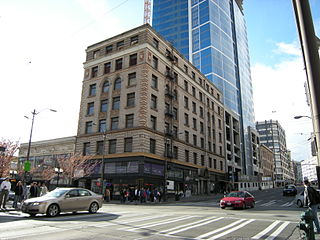
The Eitel Building is an eight-story hotel building at the corner of Pike Street and 2nd Avenue in Downtown Seattle, Washington, United States. Originally built by the Eitel Brothers in 1904 to house medical offices, the building had been mostly vacant since the 1970s and described as an eyesore. In 2016, after several attempted purchases by local developers, the Eitel Building was sold to a development company that announced its intent to convert the building into a boutique hotel. The hotel renovation, which also added the eighth floor, cost $16 million and was completed in early 2019.

1st Avenue is a major street in Seattle, Washington, United States. It traverses Downtown Seattle, including Pioneer Square and Belltown, as well as the adjacent neighborhoods of SoDo and Lower Queen Anne. Numerous landmarks including parks, museums, and historic buildings are located along the street, including Pike Place Market. The Great Seattle Fire of 1889 destroyed much of it and it had to be rebuilt. Parades have taken place on it before and after the fire.

The Louisa Hotel is a building in Chinatown-International District, Seattle. In 1983 it was the scene of the Wah Mee massacre, the deadliest mass murder in Washington state history.


